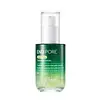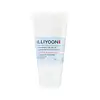What's inside
What's inside
 Key Ingredients
Key Ingredients

 Benefits
Benefits

 Concerns
Concerns

 Ingredients Side-by-side
Ingredients Side-by-side

Water
Skin ConditioningMethylpropanediol
SolventPropanediol
Solvent1,2-Hexanediol
Skin ConditioningButylene Glycol
HumectantNiacinamide
SmoothingGlycerin
HumectantCollagen Extract
Skin ConditioningMelia Azadirachta Leaf Extract
Skin ConditioningMelia Azadirachta Flower Extract
Skin ConditioningSodium Hyaluronate
HumectantOcimum Sanctum Leaf Extract
Skin ConditioningTheobroma Cacao Extract
Skin ConditioningCurcuma Longa Root Extract
MaskingCorallina Officinalis Extract
Skin ConditioningSoluble Collagen
HumectantPentylene Glycol
Skin ConditioningBakuchiol
AntimicrobialGlyceryl Polymethacrylate
Polyglyceryl-10 Laurate
Skin ConditioningAmmonium Acryloyldimethyltaurate/Vp Copolymer
Caffeine
Skin ConditioningAcrylates/C10-30 Alkyl Acrylate Crosspolymer
Emulsion StabilisingDiethoxyethyl Succinate
SolventHydrogenated Lecithin
EmulsifyingHydrogenated Polyisobutene
EmollientPanthenol
Skin ConditioningTromethamine
BufferingEthylhexylglycerin
Skin ConditioningAllantoin
Skin ConditioningAdenosine
Skin ConditioningDipotassium Glycyrrhizate
HumectantGluconolactone
Skin ConditioningCitric Acid
BufferingSodium Phytate
Dextrin
AbsorbentBeta-Glucan
Skin ConditioningTocopherol
AntioxidantCyanocobalamin
Skin ConditioningEucalyptus Globulus Leaf Oil
PerfumingAmyris Balsamifera Bark Oil
MaskingJuniperus Mexicana Oil
MaskingMentha Viridis Leaf Oil
AstringentLavandula Angustifolia Oil
MaskingMyristica Fragrans Kernel Oil
MaskingCitrus Aurantium Bergamia Fruit Oil
MaskingWater, Methylpropanediol, Propanediol, 1,2-Hexanediol, Butylene Glycol, Niacinamide, Glycerin, Collagen Extract, Melia Azadirachta Leaf Extract, Melia Azadirachta Flower Extract, Sodium Hyaluronate, Ocimum Sanctum Leaf Extract, Theobroma Cacao Extract, Curcuma Longa Root Extract, Corallina Officinalis Extract, Soluble Collagen, Pentylene Glycol, Bakuchiol, Glyceryl Polymethacrylate, Polyglyceryl-10 Laurate, Ammonium Acryloyldimethyltaurate/Vp Copolymer, Caffeine, Acrylates/C10-30 Alkyl Acrylate Crosspolymer, Diethoxyethyl Succinate, Hydrogenated Lecithin, Hydrogenated Polyisobutene, Panthenol, Tromethamine, Ethylhexylglycerin, Allantoin, Adenosine, Dipotassium Glycyrrhizate, Gluconolactone, Citric Acid, Sodium Phytate, Dextrin, Beta-Glucan, Tocopherol, Cyanocobalamin, Eucalyptus Globulus Leaf Oil, Amyris Balsamifera Bark Oil, Juniperus Mexicana Oil, Mentha Viridis Leaf Oil, Lavandula Angustifolia Oil, Myristica Fragrans Kernel Oil, Citrus Aurantium Bergamia Fruit Oil
Water
Skin ConditioningButylene Glycol
HumectantGlycerin
HumectantEthylhexyl Stearate
EmollientDimethicone
EmollientDicaprylyl Carbonate
EmollientBehenyl Alcohol
EmollientStearic Acid
CleansingPalmitic Acid
EmollientCetyl Ethylhexanoate
EmollientHydrogenated Poly(C6-14 Olefin)
Emollient1,2-Hexanediol
Skin ConditioningArachidyl Alcohol
EmollientC14-22 Alcohols
Emulsion StabilisingCetyl-Pg Hydroxyethyl Palmitamide
Skin ConditioningPolyacrylate-13
Mannitol
HumectantArachidyl Glucoside
EmulsifyingC12-20 Alkyl Glucoside
EmulsifyingHydrogenated Polyisobutene
EmollientGlyceryl Caprylate
EmollientEthylhexylglycerin
Skin ConditioningPolyglyceryl-10 Laurate
Skin ConditioningHydrogenated Lecithin
EmulsifyingEthylhexyl Palmitate
EmollientDimethiconol
EmollientPanax Ginseng Root Water
MaskingCarbomer
Emulsion StabilisingSorbitan Isostearate
EmulsifyingAcrylates/Ammonium Methacrylate Copolymer
Scutellaria Baicalensis Root Extract
AstringentPropanediol
SolventCholesterol
EmollientSilica
AbrasivePrunus Mume Fruit Extract
HumectantArachidic Acid
CleansingGlycine Max Oil
EmollientSqualane
EmollientMadecassoside
AntioxidantPolyglyceryl-10 Pentastearate
Skin ConditioningTocopherol
AntioxidantCeramide NP
Skin ConditioningOleic Acid
EmollientPhytosphingosine
Skin ConditioningPentylene Glycol
Skin ConditioningDipotassium Glycyrrhizate
HumectantCanola Oil
EmollientRosmarinus Officinalis Leaf Extract
AntimicrobialWater, Butylene Glycol, Glycerin, Ethylhexyl Stearate, Dimethicone, Dicaprylyl Carbonate, Behenyl Alcohol, Stearic Acid, Palmitic Acid, Cetyl Ethylhexanoate, Hydrogenated Poly(C6-14 Olefin), 1,2-Hexanediol, Arachidyl Alcohol, C14-22 Alcohols, Cetyl-Pg Hydroxyethyl Palmitamide, Polyacrylate-13, Mannitol, Arachidyl Glucoside, C12-20 Alkyl Glucoside, Hydrogenated Polyisobutene, Glyceryl Caprylate, Ethylhexylglycerin, Polyglyceryl-10 Laurate, Hydrogenated Lecithin, Ethylhexyl Palmitate, Dimethiconol, Panax Ginseng Root Water, Carbomer, Sorbitan Isostearate, Acrylates/Ammonium Methacrylate Copolymer, Scutellaria Baicalensis Root Extract, Propanediol, Cholesterol, Silica, Prunus Mume Fruit Extract, Arachidic Acid, Glycine Max Oil, Squalane, Madecassoside, Polyglyceryl-10 Pentastearate, Tocopherol, Ceramide NP, Oleic Acid, Phytosphingosine, Pentylene Glycol, Dipotassium Glycyrrhizate, Canola Oil, Rosmarinus Officinalis Leaf Extract
 Reviews
Reviews

Ingredients Explained
These ingredients are found in both products.
Ingredients higher up in an ingredient list are typically present in a larger amount.
1,2-Hexanediol is a synthetic liquid and another multi-functional powerhouse.
It is a:
- Humectant, drawing moisture into the skin
- Emollient, helping to soften skin
- Solvent, dispersing and stabilizing formulas
- Preservative booster, enhancing the antimicrobial activity of other preservatives
Butylene Glycol (or BG) is used within cosmetic products for a few different reasons:
Overall, Butylene Glycol is a safe and well-rounded ingredient that works well with other ingredients.
Though this ingredient works well with most skin types, some people with sensitive skin may experience a reaction such as allergic rashes, closed comedones, or itchiness.
Learn more about Butylene GlycolDipotassium Glycyrrhizate comes from licorice root.
Extracts of licorice have demonstrated to have antibacterial, anti‐inflammatory, antiviral, antioxidant properties.
One component, glabridin, has extra potent antioxidant and soothing properties. It has also been found to block pigmentation from UVB rays in guinea pigs.
Licorice Root also contains a flavonoid. Flavonoids are a natural substance from in plants. Flavonoids also have antioxidant properties.
Another component, glycyrrhizin, has been found to have anti-inflammatory and antimicrobial benefits. This may make licorice root extract effective at treating acne. However, more research is needed to support this.
Liquiritin is one of the flavone compounds found in licorice. It has been found to help lighten skin by preventing tyrosinase from reacting with tyrosine. When the two react, protein is converted to melanin. Melanin is the substance in your body that gives your features pigmentation.
Licorice root is native to Southern Europe and Asia. It has been used in traditional Chinese medicine to help with respiratory issues.
Learn more about Dipotassium GlycyrrhizateEthylhexylglycerin (we can't pronounce this either) is commonly used as a preservative and skin softener. It is derived from glyceryl.
You might see Ethylhexylglycerin often paired with other preservatives such as phenoxyethanol. Ethylhexylglycerin has been found to increase the effectiveness of these other preservatives.
Glycerin is already naturally found in your skin. It helps moisturize and protect your skin.
A study from 2016 found glycerin to be more effective as a humectant than AHAs and hyaluronic acid.
As a humectant, it helps the skin stay hydrated by pulling moisture to your skin. The low molecular weight of glycerin allows it to pull moisture into the deeper layers of your skin.
Hydrated skin improves your skin barrier; Your skin barrier helps protect against irritants and bacteria.
Glycerin has also been found to have antimicrobial and antiviral properties. Due to these properties, glycerin is often used in wound and burn treatments.
In cosmetics, glycerin is usually derived from plants such as soybean or palm. However, it can also be sourced from animals, such as tallow or animal fat.
This ingredient is organic, colorless, odorless, and non-toxic.
Glycerin is the name for this ingredient in American English. British English uses Glycerol/Glycerine.
Learn more about GlycerinHydrogenated Lecithin is created from the hydrogenation of lecithin (a group of phospholipids). Hydrogenation is a chemical reaction between hydrogen and another element.
This ingredient is an emollient and emulsifier. As an emollient, it helps soften skin by trapping moisture within. As an emulsifier, it prevents oil and water ingredients from separating.
Hydrogenated Polyisobutene is a synthetic polymer. Polymers are compounds with high molecular weight. Hydrogenated Polyisobutene is an emollient and texture enhancer.
In one study, Hydrogenated Polyisobutene showed better skin hydration levels than Caprylic/Capric Triglyceride. As an emollient, it helps keep your skin soft and hydrated by trapping moisture in.
Hydrogenated Polyisobutene is often used as a mineral oil replacement.
Learn more about Hydrogenated PolyisobutenePentylene glycol is typically used within a product to thicken it. It also adds a smooth, soft, and moisturizing feel to the product. It is naturally found in plants such as sugar beets.
The hydrophilic trait of Pentylene Glycol makes it a humectant. As a humectant, Pentylene Glycol helps draw moisture from the air to your skin. This can help keep your skin hydrated.
This property also makes Pentylene Glycol a great texture enhancer. It can also help thicken or stabilize a product.
Pentylene Glycol also acts as a mild preservative and helps to keep a product microbe-free.
Some people may experience mild eye and skin irritation from Pentylene Glycol. We always recommend speaking with a professional about using this ingredient in your routine.
Pentylene Glycol has a low molecular weight and is part of the 1,2-glycol family.
Learn more about Pentylene GlycolPolyglyceryl-10 Laurate is an ester of lauric acid and Polyglycerin-10.
Polyglyceryl-10 Laurate is a cleansing agent and emulsifier. It helps gather dirt, oil, and other pollutants to be rinsed away. As an emulsifier, it helps prevent ingredients from separating, such as oil and water.
Polyglyceryl-10 Laurate may not be fungal acne safe.
Learn more about Polyglyceryl-10 LauratePropanediol is an all-star ingredient. It softens, hydrates, and smooths the skin.
It’s often used to:
Propanediol is not likely to cause sensitivity and considered safe to use. It is derived from corn or petroleum with a clear color and no scent.
Learn more about PropanediolTocopherol (also known as Vitamin E) is a common antioxidant used to help protect the skin from free-radicals and strengthen the skin barrier. It's also fat soluble - this means our skin is great at absorbing it.
Vitamin E also helps keep your natural skin lipids healthy. Your lipid skin barrier naturally consists of lipids, ceramides, and fatty acids. Vitamin E offers extra protection for your skin’s lipid barrier, keeping your skin healthy and nourished.
Another benefit is a bit of UV protection. Vitamin E helps reduce the damage caused by UVB rays. (It should not replace your sunscreen). Combining it with Vitamin C can decrease sunburned cells and hyperpigmentation after UV exposure.
You might have noticed Vitamin E + C often paired together. This is because it is great at stabilizing Vitamin C. Using the two together helps increase the effectiveness of both ingredients.
There are often claims that Vitamin E can reduce/prevent scarring, but these claims haven't been confirmed by scientific research.
Learn more about TocopherolWater. It's the most common cosmetic ingredient of all. You'll usually see it at the top of ingredient lists, meaning that it makes up the largest part of the product.
So why is it so popular? Water most often acts as a solvent - this means that it helps dissolve other ingredients into the formulation.
You'll also recognize water as that liquid we all need to stay alive. If you see this, drink a glass of water. Stay hydrated!
Learn more about Water